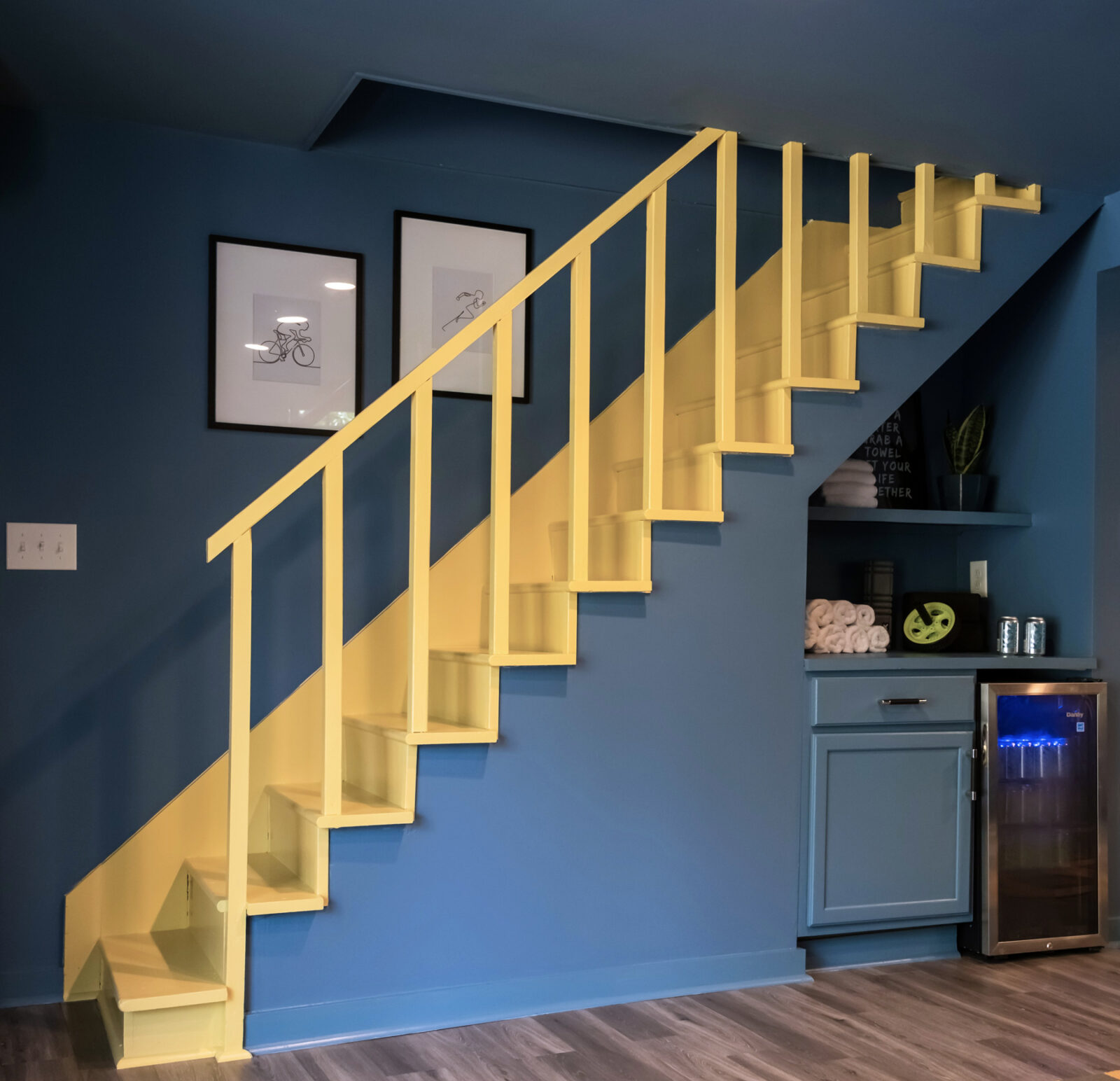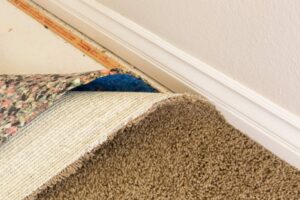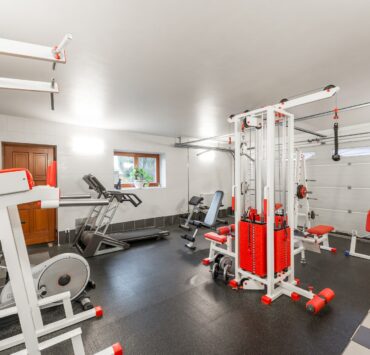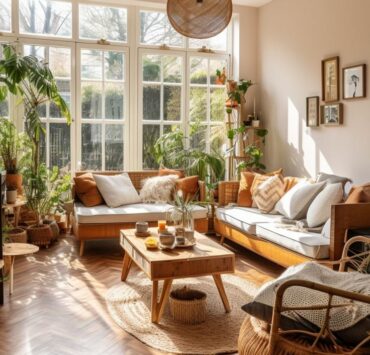Basement stairs can be as beautiful as they are practical. As the segue between your basement and the rest of your home, it’s worthwhile to make the most of its aesthetic potential. Here are 10 basement stair ideas that will let you descend down into your basement with style.
10 Basement Stair Ideas
Let The Light In With Open Slats
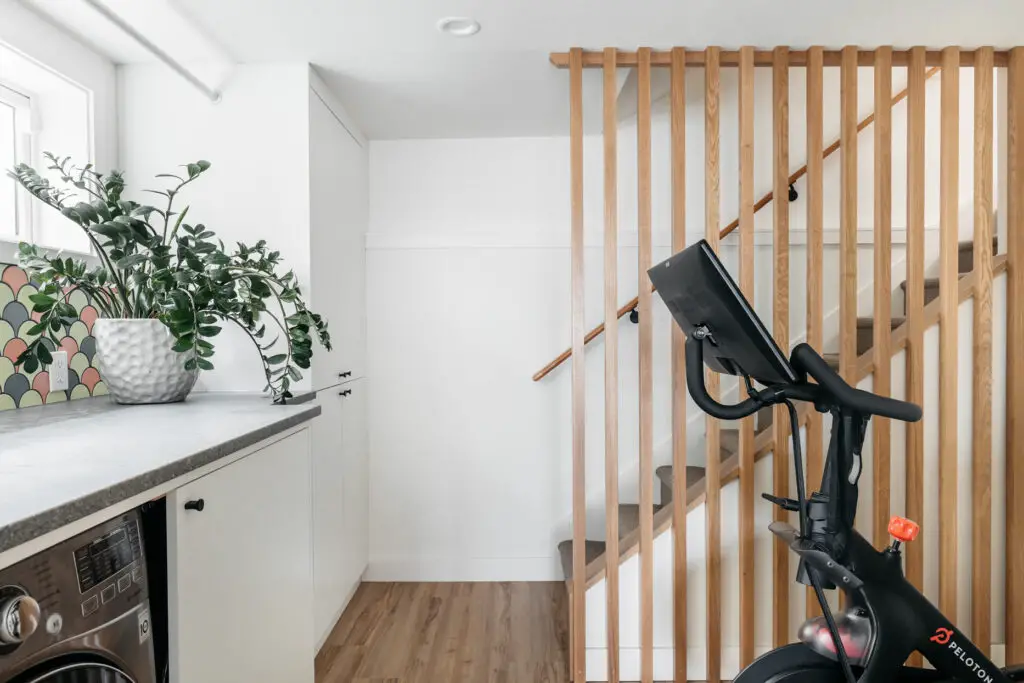
Open slats using vertical wooden beams triples as stair railings, a divider and design piece. It adds a natural and modern touch to a basement. What we like most about the slats is it allows light to come down from your home and into your basement. Forget any dark blind spots as you walk down your basement stairs. Open slats give much-welcomed light and an open view.
Maintenance Tips: To keep open slat stairs looking their best, regularly dust the slats to prevent buildup. For wood slats, use a mild wood cleaner and a soft cloth to avoid scratches. Ensure that the slats are securely fastened and check periodically for any loose or damaged sections.
Balance Out With Metal
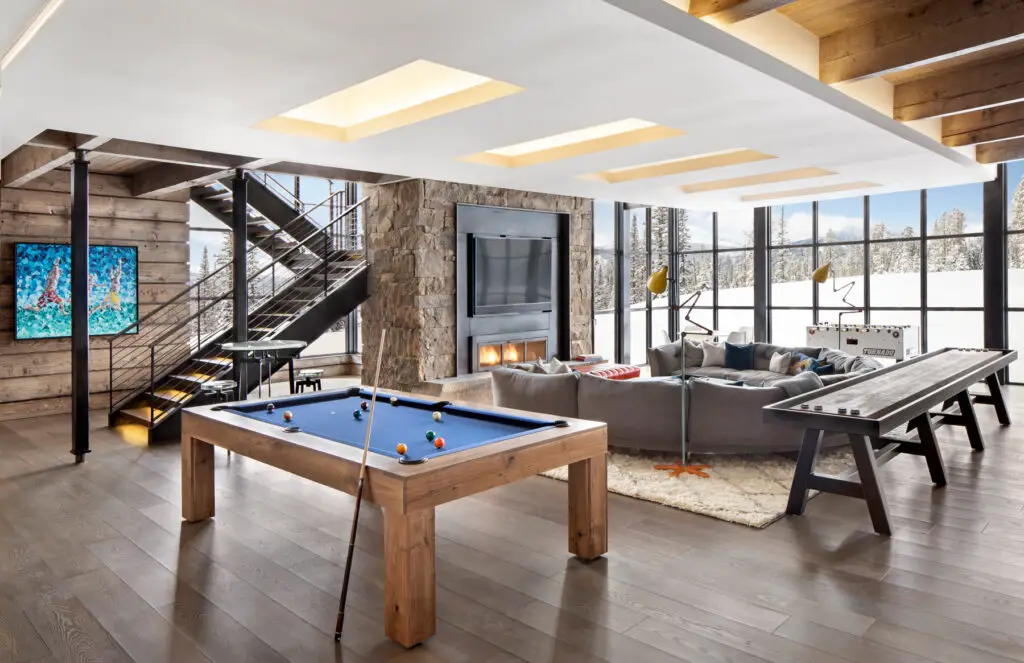
If you have the luxury of a basement, chances are you’ve incorporated plenty of natural materials to make the space feel cozy. Wooden floors, wooden ceilings, perhaps some stone work are all fantastic natural building materials. If you’ve got these elements in your basement, we suggest adding metal to balance out and compliment wood and stone materials. Metal is a natural building material but unlike wood and stone, it inherently looks modern. Incorporate metal basement stairs to add a bit of edge and a modern touch.
Maintenance Tips: Metal stairs are relatively low-maintenance but can accumulate dust and fingerprints. Clean with a damp cloth and a metal-friendly cleaner to preserve their finish. For rust prevention, especially in damp areas, ensure the metal is coated or treated for corrosion resistance.
Design A Dreamy Descent
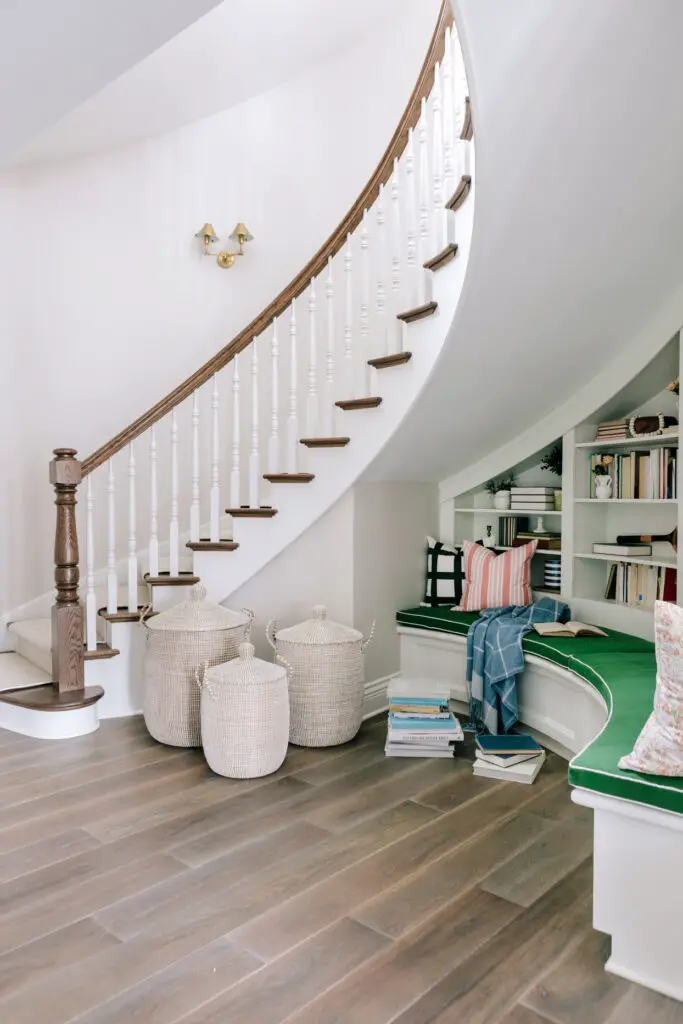
For those willing to overhaul the entire look of their basement staircase, why not go for a Victorian staircase design. There’s something distinctly whimsical about Victorian staircases. Imagine how dreamy it would be to walk down on one every time you enter your basement. Give a Victorian staircase full effect with a dreamy space to match such as a mini library, writing desk, a painting corner, etc.
Maintenance Tips: Victorian-style staircases often have intricate details that can collect dust. Use a soft brush or a vacuum with a brush attachment to clean detailed areas. For wood components, apply furniture polish occasionally to maintain their shine and protect against wear.
Color Block
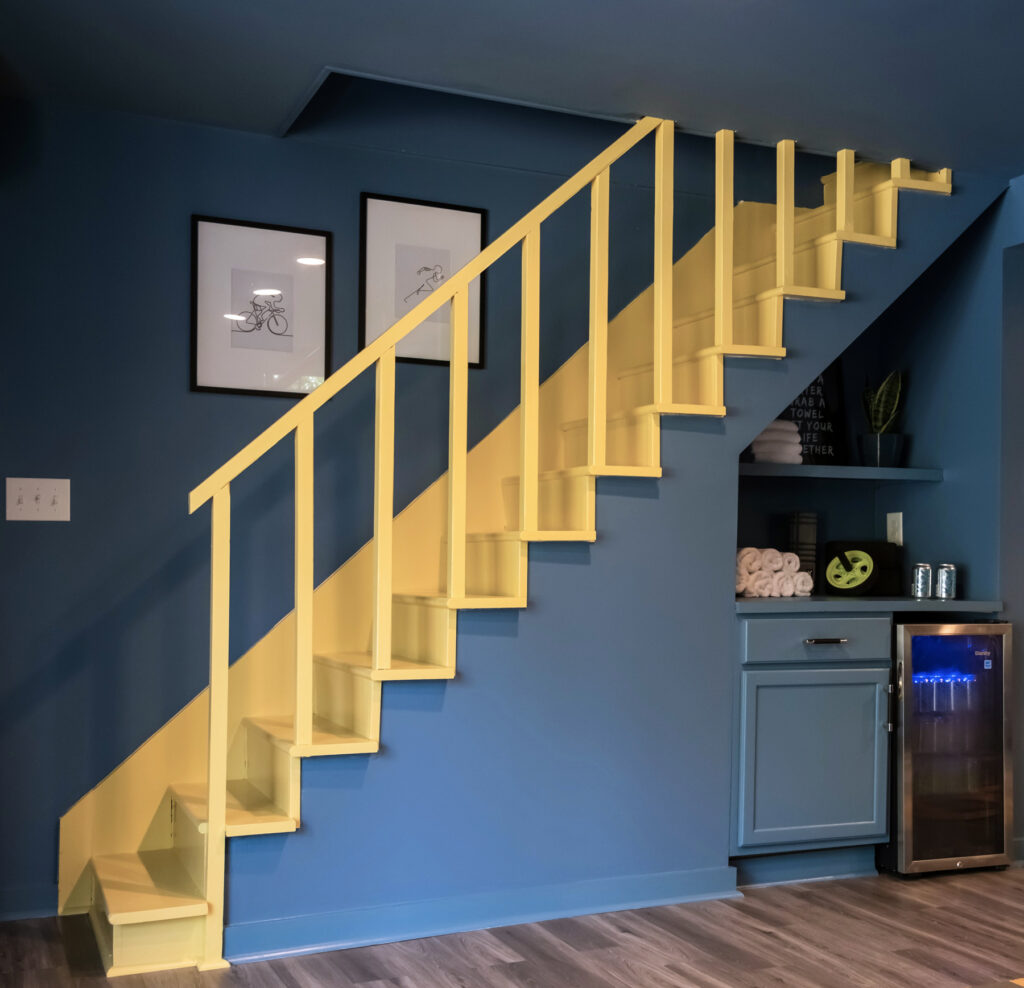
Stair ideas for basement doesn’t always mean you have to overhaul your current staircase. Regardless if you’re on a budget or not, color blocking your current staircase is an affordable and fantastic design idea. Choose two contrasting colors and paint your staircase accordingly. The end result is a lovely and bold visual in your basement.
Maintenance Tips: Painted stairs can show scuffs and scratches over time. Touch up the paint as needed to keep the colors vibrant. Use a non-abrasive cleaner and a soft cloth to clean the stairs, and avoid harsh chemicals that could damage the paint.
Turn It Into A Mini Gallery
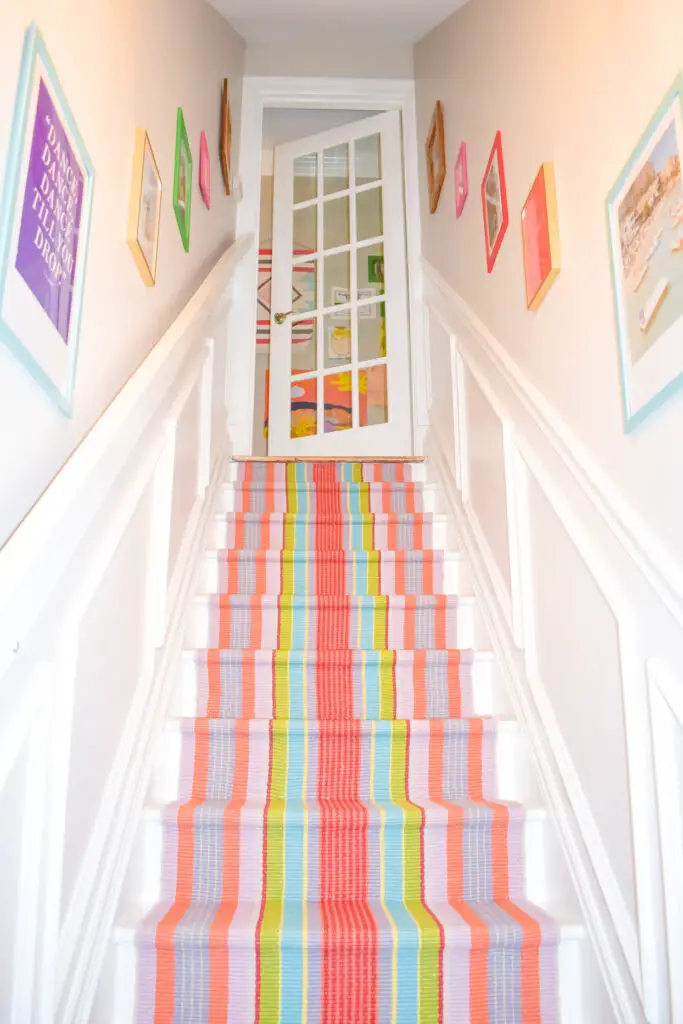
We all know how uninviting and frankly, scary looking, a basement stair hall can be. This goes for children and grownups alike. If you’ve got a basement stair hall, take out any creepy factor by adding artwork along the walls. Pair this with ample lighting, a bright coat of paint and a colorful runner to make the stair hall feel anything but foreboding.
Maintenance Tips: To keep your gallery-style staircase looking fresh, dust the artwork and frames regularly. Clean the walls and any light fixtures with a mild cleaner to ensure they complement the gallery without overshadowing it. Use a vacuum or broom to keep the stairs and hallway clear of debris.
Go For Glass Panels
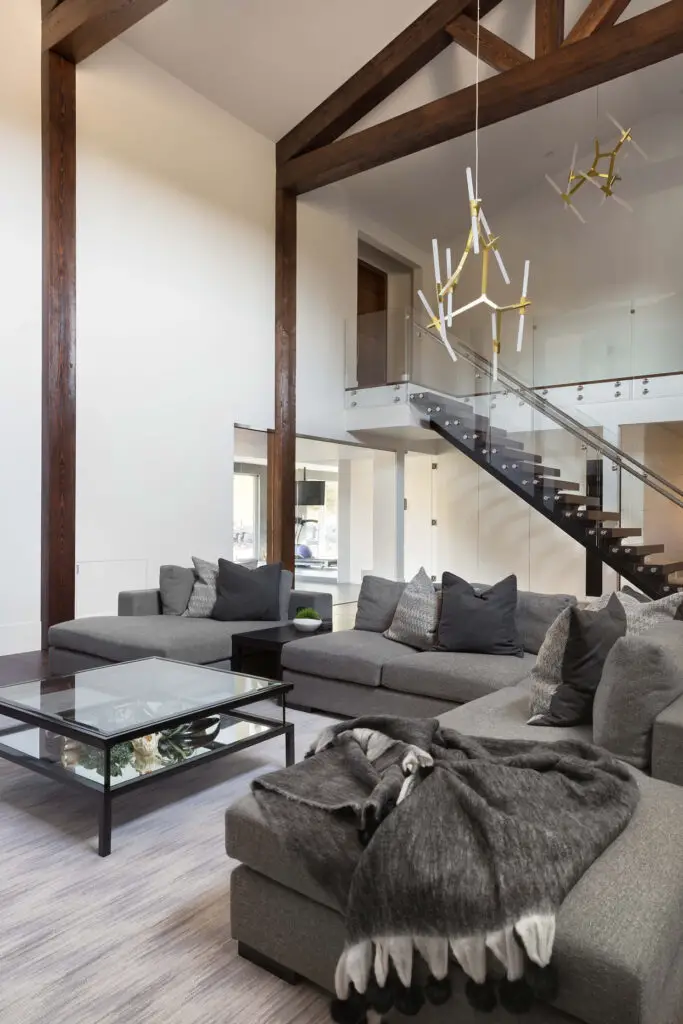
Switch up typical wooden balusters for glass panels. This basement stair railing idea gives a sleek and modern look. Glass railings also offset any sense of the basement being too enclosed. Considering that glass gives a sense of openness and allows light flow, it’s an excellent option to open up an enclosed space.
Maintenance Tips: Glass panels require regular cleaning to maintain their clarity. Use a glass cleaner and a microfiber cloth to avoid streaks. Check for any loose fittings or seals around the glass and address them promptly to prevent potential safety issues.
Cover With A Carpet
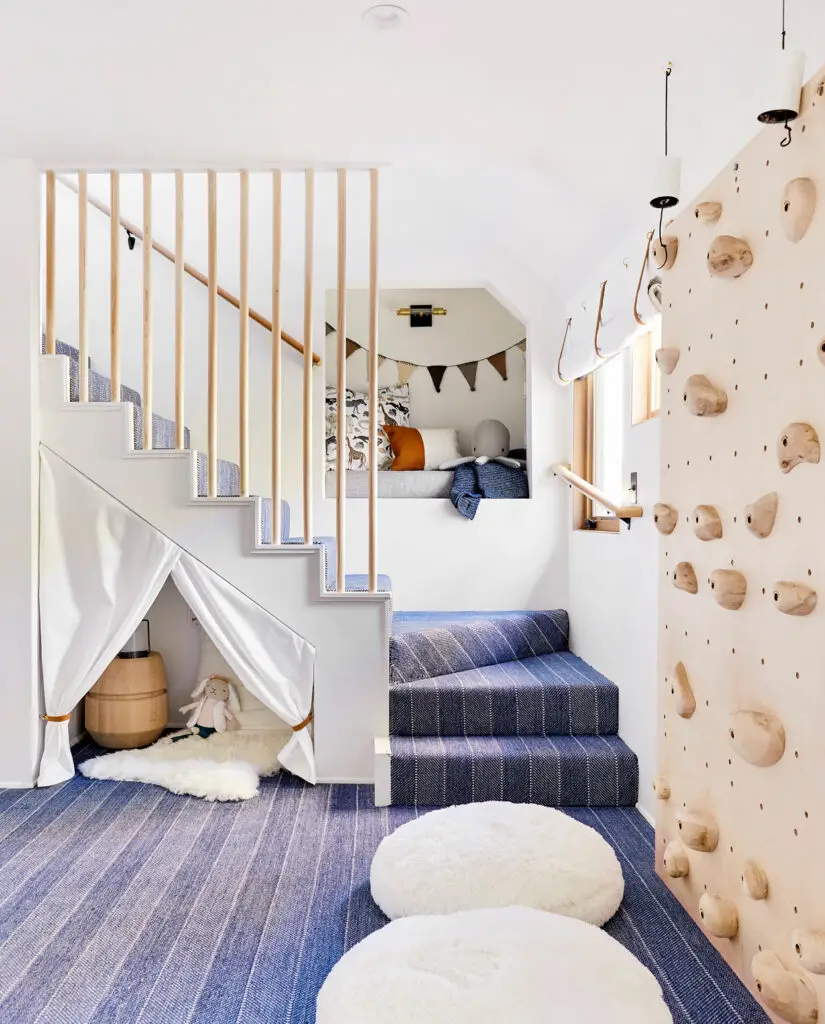
Consider covering your basement stairs with a carpet. It instantly provides a non-slip surface and it’s an absolute pleasure to walk on. Carpeted basement stairs work great for basements that have been remodeled into a home theater, family room or even a children’s play room. The carpet acts as the perfect prompt that you’re stepping into someplace cozy. You can extend the stair carpet to the rest or a portion of your basement floor to make it more cohesive with the space.
Maintenance Tips: Regular vacuuming is essential to keep carpeted stairs clean and free from dirt and debris. For deeper cleans, use a carpet cleaner or steam cleaner to remove stains and odors. If the carpet becomes loose or shows signs of wear, consider re-stretching or replacing sections to maintain a tidy appearance. Regularly check for and address any signs of mold or dampness, especially in basements with higher humidity.
Incorporate Open Stair Treads
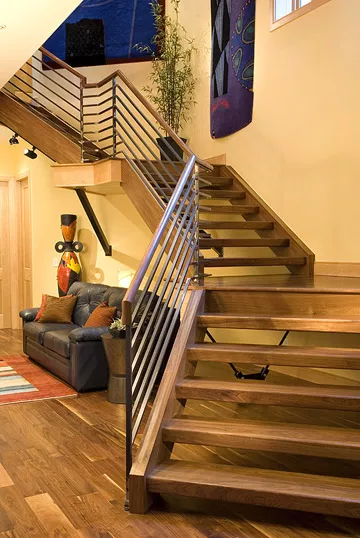
If you want to add a sense of more light, space, and visibility to a basement, incorporate open stair treads. Open stair treads make a small basement feel larger and a large basement feel grander. Like with vertical slats, open stair treads allow for some much needed light and airflow to a basement. If that wasn’t enough reason, open stair treads are beautifully modern and minimal looking. Using it as a design piece helps balance a cluttered or crowded basement.
Maintenance Tips: Open stair treads can be easier to maintain compared to enclosed staircases. Dust and debris can be removed with a broom or vacuum. For wooden treads, use a wood cleaner and a soft cloth to maintain their finish. Ensure that the treads are securely fixed and check for any loose or damaged parts periodically. If the treads have metal elements, clean them with a metal-friendly cleaner to avoid corrosion.
Build With The The Same Material

For symmetry and to make your basement staircase feel like a part of your basement, incorporate the same materials. For instance, use the same wood used to build shelves to build your staircase steps. Being consistent with the same material throughout your basement makes it look more cohesive.
Maintenance Tips: When using the same material throughout, ensure consistency in care and maintenance. For wooden stairs, apply a wood polish periodically to keep them looking their best and protect against wear. If using stone or tile, clean with appropriate cleaners to maintain their appearance. Regularly inspect the stairs for any signs of damage and address issues promptly to maintain the cohesive look of your space.
Use The Space Underneath
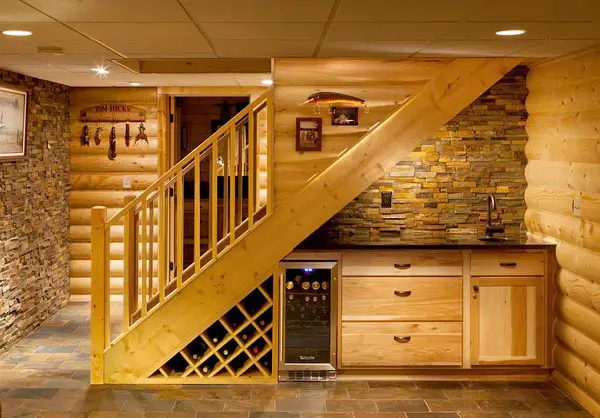
Yes, the space underneath your basement staircase still comprises what’s considered as basement stairs. Whether it’s a solid or an open space, the area underneath your basement stairs is an excellent place to create more storage. As long as structure and stability allow, create some custom shelves for storage.
Maintenance Tips: Keep the area under the stairs organized and free of clutter to maintain accessibility and appearance. Regularly clean and dust the shelves or storage units you’ve created. For any custom cabinetry or shelving, check for stability and ensure that all components are securely fastened. Address any signs of wear or damage to the storage units to keep them functional and visually appealing.

You can take this a step further by creating a dedicated nook for your basement. A wine nook, coffee or reading nook all work great.
Make the journey down to your basement a joy with every step. Regardless of what purpose your basement serves, give the descent down to the basement it’s due. There are so many open basement stair ideas and stair ideas for basement in general. It’s impossible you won’t find a design you’ll want to incorporate.
Design the stairs for both aesthetic and functional purposes. You’d be surprised at how differently you’ll look at your basement when the entry point already sets the tone.
